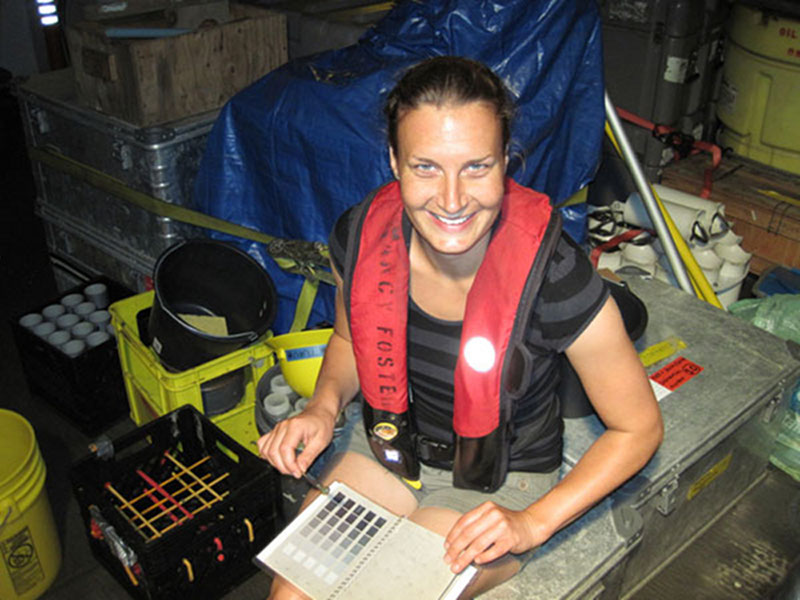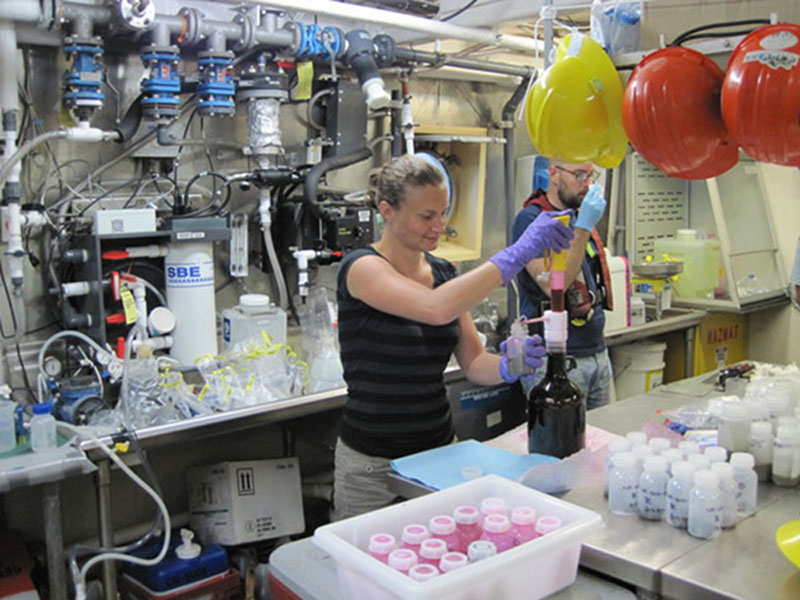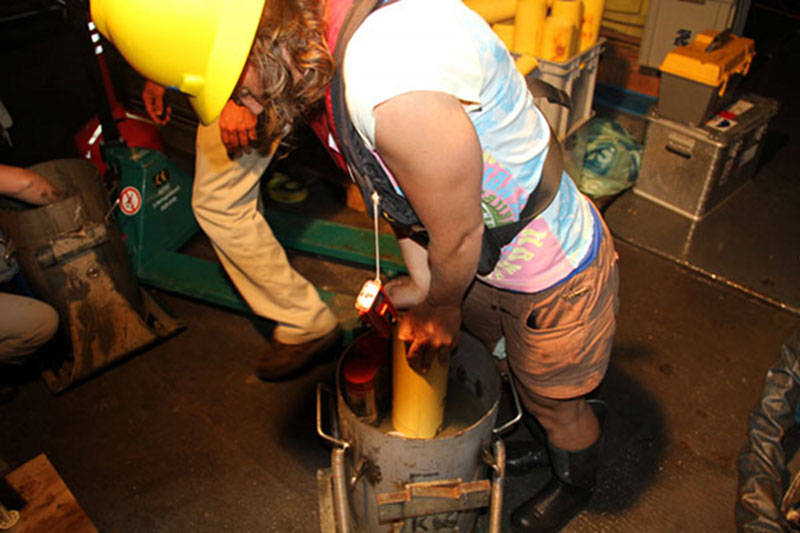
By Dr. Furu Mienis - Royal Netherlands Institute for Sea Research (NIOZ), The Netherlands
August 23, 2012

Dr. Furu Mienis checking the color of the mud sample against a reference set. Image courtesy of E. Hannerman, Deepwater Canyons 2012 Expedition, NOAA-OER/BOEM. Download image (jpg, 107 KB).
Deepwater canyons are morphologically complex geologic features with distinctive sedimentary characteristics, and sedimentation rates, in different zones. They are an analogue for rivers transporting sediment on land. In general, sediment accumulation rates in canyons are much higher than on the open slope. Sediment accumulation rates and the composition of the sediment both can be used to demonstrate the activity level of a canyon, especially when compared to the adjacent open slope.

Dr. Mienis preparing to stain some samples for the presence of protein using a dye. Image courtesy of E. Hannerman, Deepwater Canyons 2012 Expedition, NOAA-OER/BOEM. Download image (jpg, 117 KB).
As canyons exhibit different morphology than the open slope, sedimentary processes, like erosion and sediment accumulation also will differ. At the present high sea level, canyon activity is very likely reduced due to a diminished sediment supply. Therefore, erosion and sedimentation are mainly related to off shelf spill in canyon heads, failure on steep canyon walls, and resuspension by bottom currents. We assume that mainly modern type sediments (pelagic and reworked shelf sediments) are transported and that fine grained material is retained in the upper and middle parts of the canyons, which act as a temporary storage of sediment and organic carbon. These processes lead to a multitude of habitat types that can support high species diversity and high productivity.

Working with the Box Corer is often hard work, as Dr. Mienis extracts a smaller core for later analysis. Image courtesy of E. Hannerman, Deepwater Canyons 2012 Expedition, NOAA-OER/BOEM. Download image (jpg, 89 KB).
To determine the different sediment transport processes and sedimentation rates within the canyon we have deployed benthic landers and moorings equipped with current meters, temperature/salinity, turbidity and acoustic backscatter sensors, and sediment traps. The landers will measure particle fluxes, near-bed environmental conditions, and seasonal events, like tidal currents and sediment gravity flows. Since the landers will stay on the seafloor for up to a year we will be able to define the frequency and extent of events like the sediment gravity flows. The amount of material collected with the sediment traps and turbidity measurements will show the presence of passing sediment gravity flows and high turbidity layers with increased concentrations of particles.